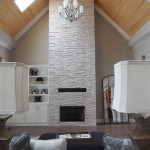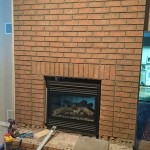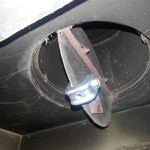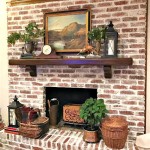Can You Paint A Wooden Fireplace Mantel White? A Comprehensive Guide
Painting a wooden fireplace mantel white is a common and relatively straightforward home improvement project that can dramatically alter the aesthetic of a room. A fresh coat of white paint can brighten a space, create a more modern look, or simply update a mantel that has become worn or outdated. However, achieving a professional-looking finish requires careful preparation, the right materials, and a methodical approach. This article provides a detailed guide on how to successfully paint a wooden fireplace mantel white, addressing key considerations and potential challenges.
The decision to paint a wooden fireplace mantel white often stems from a desire to modernize the room's appearance. Natural wood, while beautiful, can sometimes appear dated or clash with evolving interior design trends. White paint offers a versatile and timeless look that complements a wide range of styles, from minimalist to farmhouse. Furthermore, white paint can make a room feel larger and more open by reflecting light and reducing visual clutter. However, the process isn't as simple as applying paint directly to the wood.
Before embarking on this project, it's crucial to evaluate the existing condition of the mantel. Factors such as the type of wood, any existing finishes, and the presence of damage like dents, scratches, or water stains will significantly influence the preparation and painting process. A heavily damaged mantel may require more extensive repairs before painting can begin.
Key Point 1: Preparation is Paramount
Proper preparation is arguably the most critical step in achieving a professional-looking paint job. Neglecting this stage can lead to adhesion problems, uneven finishes, and ultimately, a less-than-satisfactory result. The preparation process generally involves cleaning, sanding, and priming the mantel.
Cleaning the mantel is essential to remove any dirt, dust, grease, or other contaminants that could interfere with paint adhesion. Begin by wiping down the entire mantel with a damp cloth and a mild detergent. For stubborn grime, use a stronger degreaser, but be sure to test it in an inconspicuous area first to ensure it doesn't damage the wood or existing finish. After cleaning, rinse the mantel thoroughly with clean water and allow it to dry completely.
Sanding is crucial for creating a smooth surface and providing "tooth" for the paint to adhere to. The grit of sandpaper to use will depend on the existing finish. If the mantel has a glossy finish, start with a coarser grit (around 120-150) to remove the sheen. For smoother surfaces or after removing the glossy finish, switch to a finer grit (around 220) to create an even surface. Always sand in the direction of the wood grain to avoid creating unsightly scratches. Pay particular attention to edges and corners, as these areas can be prone to chipping and unevenness. After sanding, thoroughly remove all sanding dust with a tack cloth or a vacuum cleaner with a brush attachment.
Priming is the final step in preparing the mantel for paint. A primer helps to seal the wood, create a uniform surface, and improve paint adhesion. Choose a primer specifically designed for wood surfaces, and consider using a stain-blocking primer if the mantel is made of a wood that is known to bleed tannins, such as redwood or cedar. Apply the primer in thin, even coats, following the manufacturer's instructions. Allow the primer to dry completely before proceeding to the painting stage. Lightly sand the primed surface with a fine-grit sandpaper (around 320) to remove any imperfections and create an even smoother surface for the paint to adhere to. Again, remove all sanding dust before painting.
Key Point 2: Choosing the Right Paint and Application Techniques
Selecting the appropriate paint is just as important as preparing the surface. The type of paint and finish you choose will affect the durability, appearance, and overall longevity of the paint job. Consider the following factors when selecting paint for your wooden fireplace mantel.
Paint type: Both latex (water-based) and oil-based paints can be used on wooden mantels. Latex paints are generally preferred for their low odor, ease of cleanup, and environmental friendliness. They also tend to be more flexible than oil-based paints, which makes them less prone to cracking. However, oil-based paints offer superior durability and a harder finish, making them a good choice for high-traffic areas. Alkyd paints offer some of the benefits of both latex and oil-based paints. They clean up with soap and water like latex paint but they provide a durable, hard finish like oil paint.
Paint finish: The finish of the paint refers to the amount of sheen it has. Common paint finishes include flat, matte, eggshell, satin, semi-gloss, and gloss. For fireplace mantels, satin or semi-gloss finishes are often recommended. Satin provides a subtle sheen that is easy to clean, while semi-gloss offers a more durable and reflective surface. Avoid using flat or matte finishes, as they are difficult to clean and tend to show scuffs and marks more easily.
Application Techniques: Apply the paint in thin, even coats using a high-quality brush, roller, or a combination of both. For intricate details and moldings, a brush is usually the best choice. Use a roller for larger, flat surfaces. When using a brush, apply the paint in the direction of the wood grain. When using a roller, use smooth, overlapping strokes. Avoid applying too much paint at once, as this can lead to drips and runs. Allow each coat of paint to dry completely before applying the next coat. Lightly sand between coats with a fine-grit sandpaper to remove any imperfections and create a smooth, even finish. Apply at least two coats of paint for optimal coverage and durability. For best results, follow the paint manufacturer's instructions regarding drying times and application techniques.
Key Point 3: Addressing Specific Challenges
Painting a wooden fireplace mantel can present unique challenges depending on the specific characteristics of the wood and the existing finish. Addressing these challenges effectively is crucial for achieving a professional-looking result.
Knot Bleeding: Some types of wood, such as pine, contain knots that can bleed through the paint, causing discoloration. To prevent this, apply a shellac-based primer to the knots before priming the entire mantel. Shellac is an effective barrier that prevents the tannins in the knots from seeping through the paint.
Existing Dark Finishes: Painting a dark wood mantel white can be particularly challenging, as the dark color can bleed through the new paint. In this case, it may be necessary to apply multiple coats of primer and paint to achieve complete coverage. Consider using a tinted primer that is close to the final paint color to help block the dark color. Alternatively, consider using a stain-blocking primer to further reduce the risk of bleed-through.
Cracks and Imperfections: If the mantel has cracks, dents, or other imperfections, fill them with wood filler before painting. Apply the wood filler according to the manufacturer's instructions, allow it to dry completely, and then sand it smooth. Be sure to prime the filled areas before painting to ensure proper adhesion.
Heat Resistance: While a painted mantel itself isn't directly exposed to intense heat, it's prudent to consider the proximity to the fireplace opening. Using a paint with some degree of heat resistance can help prevent discoloration or damage from radiant heat. Consult with a paint specialist for recommendations on heat-resistant paints suitable for fireplace mantels.
Ultimately, painting a wooden fireplace mantel white is a project that rewards careful planning, meticulous preparation, and attention to detail. By following these guidelines and addressing potential challenges proactively, homeowners can transform their fireplace mantel into a stunning focal point that enhances the overall aesthetic of their living space. The right preparation, appropriate materials, and methodical application techniques ensure a long-lasting and visually appealing outcome.

Painting Your Oak Mantel White Hometalk

Painting Your Oak Mantel White Hometalk

How To Repaint A Fireplace Mantel Diy Project And Special Message

Painting Your Oak Mantel White Hometalk

Two Tone Fireplace Makeover Love Grows Wild

How To Paint A Wooden Fireplace Surround

Paint A Fireplace To Look Like Cast Stone Porch Daydreamer

The Fireplace

How To Paint A Wooden Fireplace Surround

Oak Mantel Makeover Centsational Style
Related Posts








